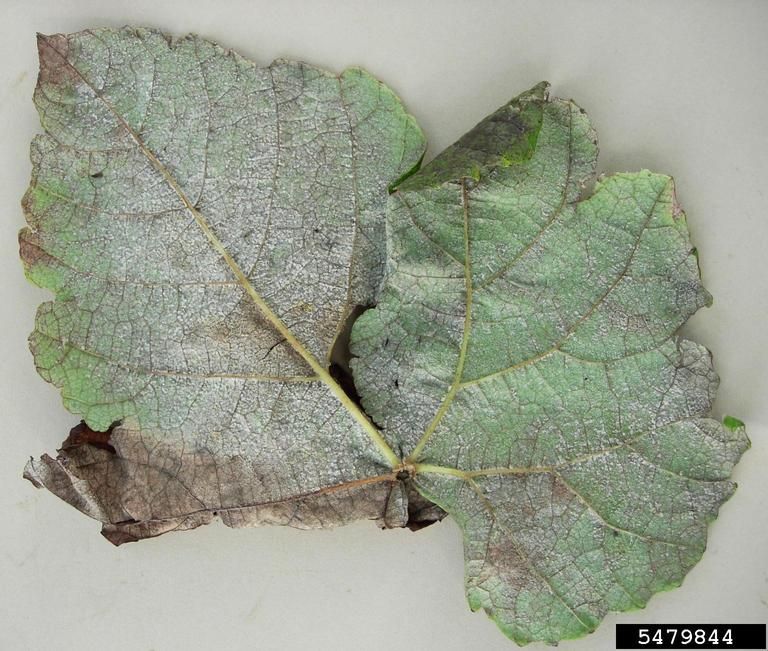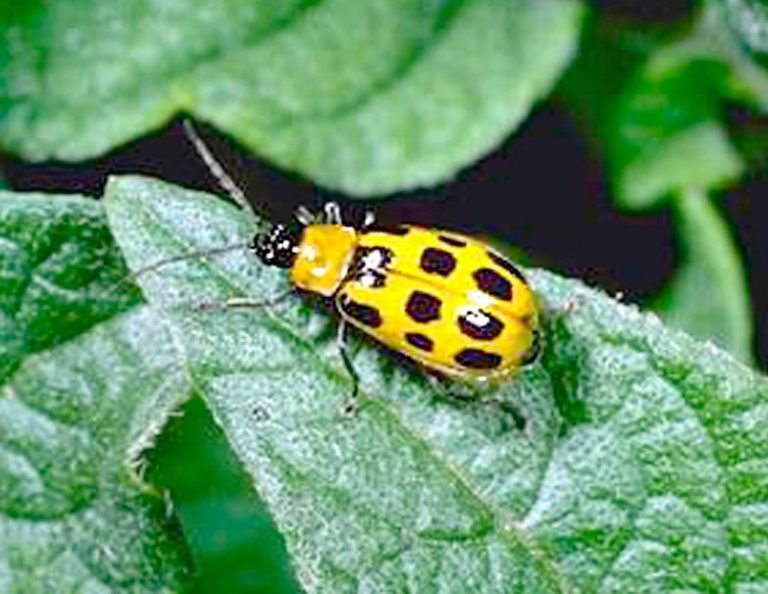Treating Powdery Mildew: Solutions For A Common Fungal Disease
What is Powdery Mildew?
Powdery mildew is a fungal disease that affects thousands of plant species, including many vegetables, fruits, and ornamentals (CT.gov). It is caused by various species of fungi in the order Erysiphales that thrive in warm, humid environments (CSU Extension). The disease is easily recognized by the white, powdery growth of fungal mycelia and spores on the surfaces of leaves, stems, and fruits of infected plants (UC ANR).
There are many species of powdery mildew fungi, with some being host-specific to certain plants while others have a wide host range. Common types include Erysiphe polygoni, which infects roses, cucurbits, and fruit trees, and Golovinomyces orontii, which infects cucurbits (CT.gov). The life cycle begins when spores land on susceptible plant tissue and form projections that penetrate the epidermal cells. The fungus grows on the plant surface while sending haustoria into epidermal cells to withdraw nutrients. After 7-12 days, new spores form in chains or clusters on the mycelia, allowing the disease to spread rapidly under suitable conditions (CSU Extension).
Outbreaks often occur when temperatures are moderate (60-80°F), humidity is high, and there is little air circulation. Dense foliage and excessive nitrogen fertilization also favor powdery mildew development. The spores thrive during extended periods of dry plant surfaces, infecting leaves when humidity rises at night (UC ANR).
Identifying Powdery Mildew
Powdery mildew is one of the most easily identifiable plant diseases. It presents as a white or grayish powdery coating on the leaves, stems, flowers and fruits of affected plants. According to this source, the powdery appearance comes from the fungal spores and hyphal strands growing superficially on plant surfaces.
This powdery coating will start off looking like small circular spots but can grow to cover the entire leaf surface if left untreated. Powdery mildew can be distinguished from other fungal diseases by its distinctive powder-like appearance and lack of leaf spots or blight.
Whereas diseases like downy mildew will exhibit yellowing on the upper surfaces of leaves, powdery mildew does not cause any discoloration of the leaf surface underneath the fungal growth. The powdery signs are confined to the exterior of leaves, buds, and stems.
Additionally, powdery mildew does not create the same lesions or dark moldy growths symptomatic of other fungal diseases. The soft white coating is visually unique to powdery mildews among plant pathogens.
Plant Types Affected
Powdery mildew commonly affects many vegetables, fruits, herbs, flowers, and ornamentals. Some of the most susceptible plant types include:
- Squashes, melons, cucumbers, and other cucurbits
- Roses, dogwoods, lilacs, and other ornamentals
- Grapes, apples, cherries, and other fruits
- Onions, peas, beans, lettuce, spinach and other leafy greens
Powdery mildew fungi are host-specific, so they usually only infect related types of plants. However, under certain conditions, powdery mildew can occasionally spread to less common hosts such as:
- Tomatoes, potatoes, peppers (https://ipm.ucanr.edu/PMG/PESTNOTES/pn7406.html)
- Zinnias, marigolds, petunias (https://extension.umn.edu/plant-diseases/powdery-mildew-flower-garden)
Knowing which plants are most vulnerable can help focus prevention efforts on susceptible species.
Preventing Powdery Mildew
There are several cultural practices that can help prevent powdery mildew infections from taking hold.
Proper spacing between plants is important to allow for sufficient air circulation. Plants should be spaced according to spacing recommendations for the specific type and variety. Increased space between plants reduces humidity levels around leaves and allows air to move freely (Source).
Careful watering practices can also help prevent powdery mildew. Water early in the day so that plant leaves have time to dry out before night falls. Avoid overhead watering and use a drip irrigation system or soaker hoses instead. This keeps moisture off leaves and stems (Source).

Good air circulation around plants is also critical. Prune or trim plants to open up dense growth. Use fans or blowers to keep air moving around susceptible plants. Remove any weeds, dead leaves, or debris that can harbor the fungus (Source).
Organic Treatment Options
There are several effective organic treatment options for powdery mildew that can help get rid of the fungal disease without the use of harsh chemicals. Some of the most popular organic treatments include:
Baking Soda
Baking soda is one of the best home remedies for treating powdery mildew. Mix 1 tablespoon baking soda and 1⁄2 teaspoon liquid soap in 1 gallon of water. Spray the solution onto affected plants leaves every 2-3 weeks as a preventative treatment or every 5-7 days to treat existing infections. The alkalinity of baking soda helps change the pH on plant surfaces to discourage fungal growth (Source).
Milk Sprays
The proteins in milk have anti-fungal properties that can help control powdery mildew. Mix 1 part milk with 9 parts water and spray on affected plant leaves. The milk solution helps inhibit the growth and spread of the fungal spores. Reapply every 7-10 days as needed.
Essential Oils
Certain essential oils like clove oil, rosemary oil, and thyme oil have natural antifungal abilities. Mix 5-10 drops of essential oil into 1 gallon of water. Add 1 teaspoon of mild soap. Shake well and spray onto plant leaves. Reapply every 7-10 days. The oils help kill fungal spores on contact (Source).
Biological Fungicides
Organic biological fungicides contain beneficial microbes that colonize plant surfaces and compete with the fungal disease, preventing its growth and spread. Products with Bacillus subtilis or Streptomyces lydicus can be used against powdery mildew. Always follow label instructions for dosage and application.
Chemical Fungicides
Chemical fungicides provide a quick and effective way to treat existing powdery mildew infections. Some commonly used powdery mildew fungicides include:
- Sulfur – A natural mineral fungicide that can effectively treat powdery mildew. Sulfur needs to be applied preventatively and works best when temperatures are above 60°F (see https://hgic.clemson.edu/factsheet/powdery-mildew/).
- Myconate – A synthetic fungicide that works by interfering with the cell membrane of the fungus (see https://ipm.ucanr.edu/PMG/PESTNOTES/pn7493.html). Myconate is effective against severe infections.
- Chlorothalonil – A broad-spectrum fungicide that prevents spore germination. It may be used against rusts, scab, leaf spots, blights and mildews (see https://hgic.clemson.edu/factsheet/powdery-mildew/).
The main benefits of chemical fungicides are that they provide rapid knockdown of existing infections. They are especially useful when dealing with severe powdery mildew cases. The main drawbacks are possible toxicity to beneficial insects, the development of fungicide resistant strains, and potential environmental contamination. Always follow label instructions carefully.
Chemical fungicides work best when applied preventatively before powdery mildew develops. For curative control, use fungicides targeted to the specific fungal life stage present. Rotation of fungicide modes of action helps prevent resistance. Ensure full coverage of leaf surfaces for maximum effectiveness.
Cultural Control Methods
Cultural control methods involve changing the growing conditions to make the environment less favorable for powdery mildew fungal growth and spread. Some key cultural control methods include:
Pruning
Pruning infected plant parts helps remove and destroy sources of fungal spores. Target pruning to open the plant canopy to increase air flow and reduce humidity levels. According to the University of California Powdery Mildew Guidelines, “prune infected shoots and leaves (pick off and discard or destroy them), shoots that touch the ground, and interior shoots that have poor air circulation.” Frequent light pruning is more effective than infrequent heavy pruning.
Sanitation
Powdery mildew fungi can overwinter on plant debris and fallen leaves. Regularly remove and destroy infected plant parts and leaves to disrupt the fungal life cycle. According to Clemson University Powdery Mildew Guidelines, “After harvest, till under crop debris, as the fungus may overwinter in this material.” Keep the area around plants clean.
Plant Rotation
Avoid planting the same species in the same area year after year, as this allows powdery mildew inoculum to accumulate. Rotate plant families and avoid repeat plantings. For example, rotate cucurbits with corn or legumes.
Resistant Plant Varieties
When selecting plants for the garden, choosing varieties that are naturally resistant to powdery mildew can help prevent infections. Certain plant hybrids and native species have genetic traits that make them less susceptible to powdery mildew. According to MarthaStewart.com, some powdery mildew resistant plants include:
- Phlox – Largeleaf phlox (Phlox amplifolia) has good resistance.
- Bee balm – Try powdery mildew resistant cultivars like Jacob Cline.
- Zinnia – Powdery mildew resistant options include the State Fair series.
- Tomatoes – Look for TMV resistant hybrids like Juliet, Sun Gold, and Sungold.
Native plant species that are resistant include black-eyed Susans, purple coneflowers, and spiderworts. Check with local nurseries or extension services for recommended native plants for your growing zone that have natural powdery mildew resistance.
According to research from Purdue University’s Extension:
Disease Resistant Annuals and Perennials in the Landscape, incorporating resistant varieties into the landscape plan can reduce powdery mildew problems.
Managing Existing Infections
If powdery mildew is already present, swift action is needed to prevent it from spreading and damaging more plants. There are several approaches to managing existing infections:
Quarantining: Isolate any infected plants from healthy ones. This helps prevent the spores from spreading on air currents to uninfected plants. Move infected plants to an area with good airflow and spacing. Disinfect any tools used on sick plants before using on unaffected plants.
Selective Pruning: Prune out infected leaves, stems, and buds, taking care to not spread spores in the process. Make cuts well into healthy tissue to remove all affected areas. Sanitize pruners between each cut with isopropyl alcohol. Remove all debris and dispose of properly. Frequent pruning can help reduce disease development.
Fungicide Schedule: Apply targeted fungicides per label instructions to protect healthy tissue and prevent further spread. Commercial products like Immunox(URL) or safer organic options like neem oil(URL), potassium bicarbonate or sulfur can suppress spore production and transmission. Maintain a regular 14-day spray schedule until the disease is under control. Always follow safety guidelines when applying any fungicide.
Quickly implementing quarantining, pruning and a fungicide regimen at first signs of infection provides the best chance to contain existing powdery mildew and limit impacts.
Long-Term Control
Managing powdery mildew over the long-term requires taking proactive measures to prevent fungal spores from persisting in the environment:
- Prune and destroy infected plant material in the fall to prevent the fungus from overwintering – this removes inoculum that can start new infections the following season.
- Rake up and remove fallen leaves to eliminate overwintering sites for the fungus.
- Space plants appropriately and prune selectively to allow good air circulation and faster drying – this creates an unfavorable environment for fungus growth.
- Grow resistant plant varieties whenever possible – choose options labeled as mildew-resistant or immune when selecting plants.
- Water plants at the base and avoid wetting foliage – moisture on leaves encourages mildew growth.
- Disinfect gardening tools after working with infected plants to prevent spreading spores.
Following these practices diligently over time can significantly reduce powdery mildew pressures in the landscape.






